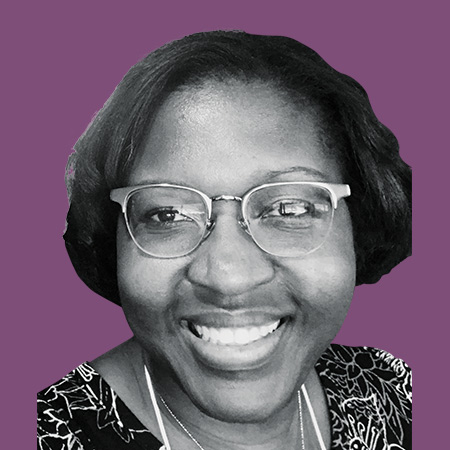Growing up African American in a white suburban school district, Lisa McDonald longed for teachers to recognize her potential. “My being a teacher stems from this brown little girl who wanted someone to take the time to know me,” says McDonald, a TC Science Education doctoral student.
McDonald struggled with reading, yet in sixth grade she qualified to transfer out of her inner-city Rochester school to where “teachers had never taught a kid who looked like me.”

Lisa McDonald (Ph.D. Candidate) (Photo Courtesy of Lisa McDonald)
In fact, McDonald next encountered a teacher of color at TC, where Professor of Science & Education Felicia Mensah has acquainted her with critical race theory — racism viewed as part of America’s systemic fabric. Mensah encourages all aspiring teachers of color to reflect on their own experiences of race and use racial experiences in the classroom — for example, teaching a scientific principal using foods kids eat at home.
But as Yolanda Sealey-Ruiz, Associate Professor of English Education, recently asserted while facilitating a professional development conference in suburban Detroit, bringing race into the classroom isn’t an idea reserved solely for people of color.
A white teacher had said that her school, being mostly white, didn’t “need to” foster cultural awareness.
Read more about TC alumni, faculty and students addressing mounting challenges at a critical moment for the future of education.
Sealey-Ruiz offered a measured response. “You know, white people also have cultural identity,” she said. “We all have racial and class identities. So, why not engage your students in theirs? When they leave home, they are going to see people of different ethnicities. You are not preparing them for full citizenry if you lead them to believe that white is an invisible norm that isn’t worthy of discussion.”
Sealey-Ruiz wants educators to conduct an “archaeology of self.”
“Before they conceptualize lesson plans, teachers need to do self-work around race, gender and sexual identity,” she says. “Then the curriculum will flow in the right direction. It is a sustaining, lifelong process that can’t be taught in a professional development conference or a book.”
Lisa McDonald is applying that outlook in her first-grade classroom at The School at Columbia. There, she routinely asks students whose family backgrounds span the globe to explore goals, dreams and ethnic traditions through written narratives, poetry and dioramas.
“Children need to be able to see themselves and merge learning with their interests,” McDonald says. “I want to be the teacher who gives them a voice.”